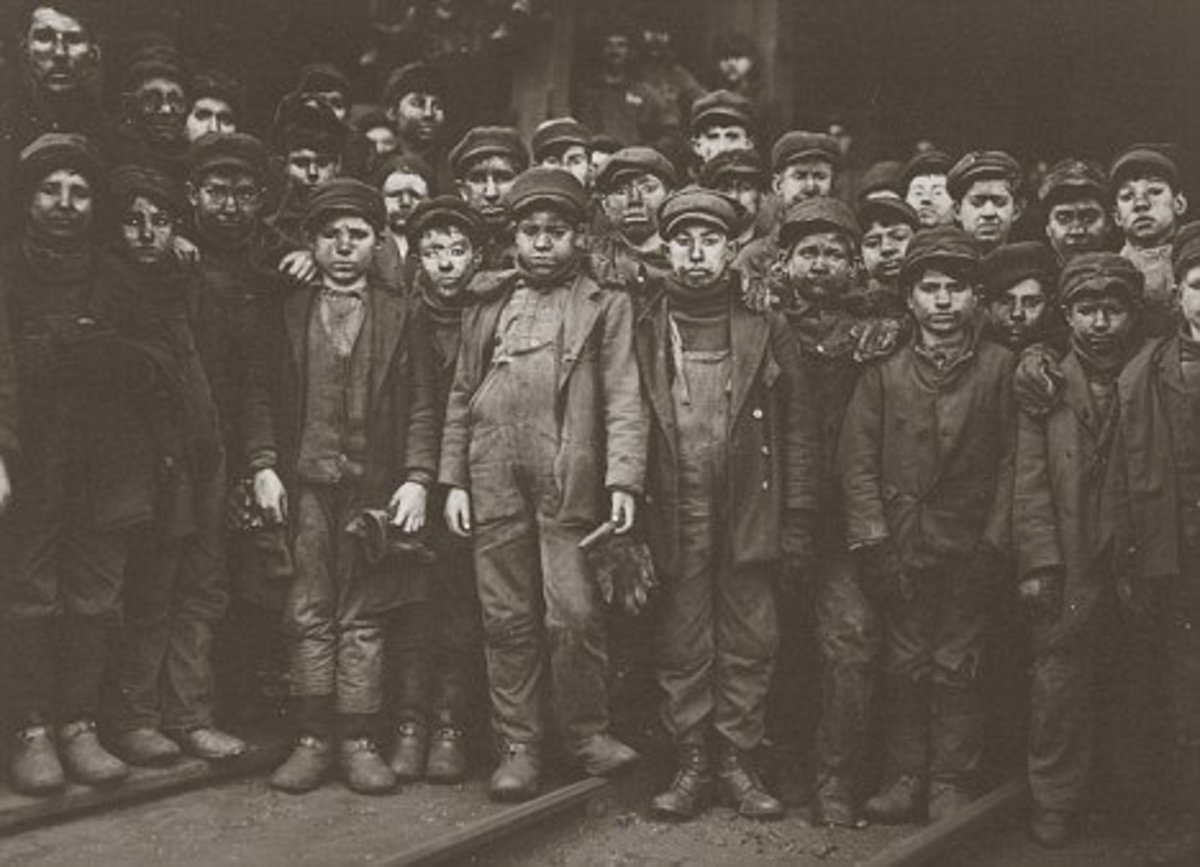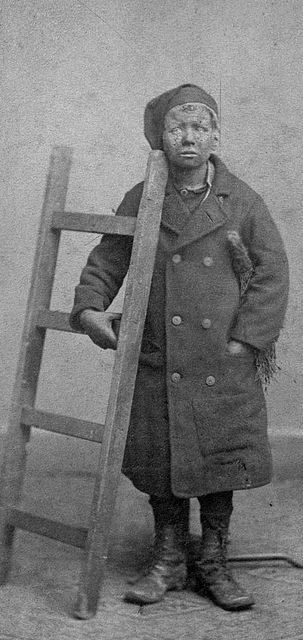This is a watercolour painting of a condition known as ‘Chimney Sweep's Cancer’, also called soot wart, on a 32yo man. Soot warts are a squamous cell carcinoma of the skin of the scrotum & it was the first reported form of occupational cancer.
(gruesome) Thread!
(gruesome) Thread!
Sweep’s cancer was a common condition in 18th century Europe, but it was particularly prevalent in Britain where the flues were much narrower. Adults couldn’t fit inside, so very young boys aged between 4 and 7 years were apprenticed to sweeps to do the work.
It was extraordinarily dangerous. These ‘climbing boys’ could get jammed in the flue, suffocate or burn to death if their master lit a fire beneath them to speed things up. Its likely this is where the expression to 'light a fire' under someone comes from
Whereas German chimney sweeps tight clothing (like this image from 1785), British child sweeps were sent up the chimney wearing just a shirt or often completely naked. At night, they slept under soot sacks.
Sweeps were notorious for not washing. This meant they were in contact with soot all the time. Several laws were passed to try and end the practice & raise the minimum age of apprenticeship for chimney sweeps to 16 years, but they were difficult to enforce & largely ignored.
Sweep’s cancer is a squamous cell carcinoma of the skin of the scrotum. The average age for the onset of symptoms was 37, but it was reported in children as young as 8. The disease was preceded by the development of hyperkeratotic lesions, which the sweeps called ‘soot warts’.
If they are not removed, they will develop into scrotal cancer & prove fatal. Most doctors thought they were the result of an STI & treated them with mercury.
But sweeps would often try to deal with soot warts by themselves by simply cutting them off. In 1850, Dr George Lawson treated one such man; "he seized with a split stick & cut off with a razor. He remarked that it was not very painful. He resumed work the following day."
If removing the soot wart wasn’t successful it would become malignant. This is a description of one 28year old man who was admitted to hospital in 1825.
It is understandable that sweeps would delay seeking medical treatment for this. The only course of action was surgery to remove the testicle – without anaesthetic. This is a description of one such operation carried out by William Sand Cox in 1846.
The Barts Pathology Museum in Smithfield holds several specimens of sweep’s cancer and soot warts that were removed from afflicted patients that you can see today.
Photographs copyright © Patricia Niven https://spitalfieldslife.com/2013/08/14/at-barts-pathology-museum/
Photographs copyright © Patricia Niven https://spitalfieldslife.com/2013/08/14/at-barts-pathology-museum/
It was English surgeon Percivall Pott who in 1775 first suggested this was a cancer caused by exposure to soot as a child. In doing so, Pott was the first physician to claim cancer could be caused by an environmental carcinogen.
This was the first occupational link to cancer. You can read his work online at the Wellcome Collection https://wellcomecollection.org/works/pvdd4yrv/items?canvas=3&langCode=eng&sierraId=b3079044x
What no one understand is how does soot cause cancer? The prevailing theory was that soot got caught in the skin folds of the scrotum and irritated the skin, causing the cancer.
It wasn’t until 1922, that R.D. Passey, a research physician at Guy's Hospital in London proved skin cancer in mice was caused by exposed to an extract made from soot. From there, doctors soon found out that there are several polycyclic hydrocarbons in soot that are carcinogens
Children were still used as sweeps in Britain until the practice was finally outlawed in 1875, following the death of twelve-year-old George Brewster whose master had caused him to climb and clean the chimney at Fulbourn Hospital.
George got stuck and a wall had to be pulled down to get him out. He died a few days later and his master was charged with manslaughter.
The 1875 act prohibited any person under 21 from working as a sweep, forced all sweeps to register with the police, & order official supervision of their work.
George Brewster was the last child chimney sweep in England to die in a chimney.
George Brewster was the last child chimney sweep in England to die in a chimney.
(Medical mages from the Wellcome Collection)
If you would like to read more about the history of soot warts and sweep cancer, here are some great online resources
https://bjui-journals.onlinelibrary.wiley.com/doi/full/10.1111/j.1464-410X.2011.10487.x
https://www.ncbi.nlm.nih.gov/pmc/articles/PMC1009212/pdf/brjindmed00056-0030.pdf
https://oem.bmj.com/content/oemed/40/4/390.full.pdf
https://bjui-journals.onlinelibrary.wiley.com/doi/full/10.1111/j.1464-410X.2011.10487.x
https://www.ncbi.nlm.nih.gov/pmc/articles/PMC1009212/pdf/brjindmed00056-0030.pdf
https://oem.bmj.com/content/oemed/40/4/390.full.pdf

 Read on Twitter
Read on Twitter



















